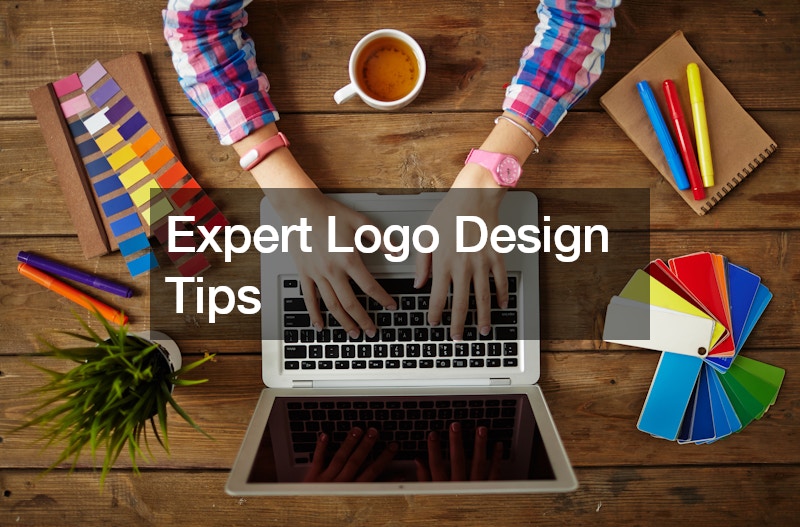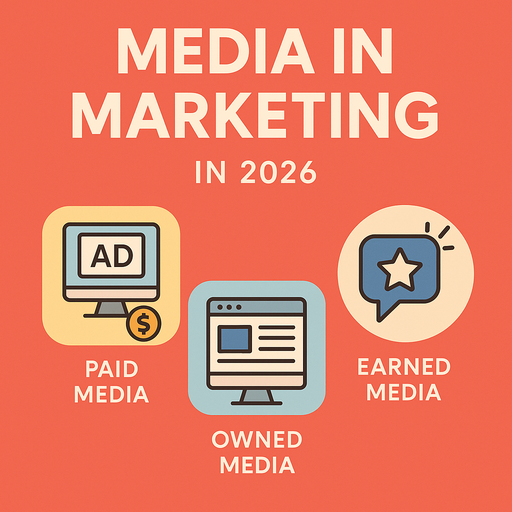Are you looking to create a logo that truly stands out and represents your brand effectively? Look no further! In this blog post, we will be sharing expert logo design tips and tricks that will take your branding to the next level. Whether you’re just starting out or looking to revamp your current logo, these valuable insights will help you craft a memorable and impactful design. So grab a pen and paper, because it’s time to elevate your logo game!
Importance of a well-designed logo
A well-designed logo is more than just a visual representation of a brand; it’s the cornerstone of its identity. It serves as the face of the company, making an immediate and lasting impression on customers. A logo should be memorable, versatile, and reflective of the brand’s values and personality.
What is a logo?
With so much competition in today’s market, having a strong logo can set a business apart from others. It helps to establish credibility and professionalism while building trust with consumers. A poorly designed logo can send mixed messages or fail to resonate with the target audience, ultimately hindering brand recognition.
Investing time and resources into creating a well-thought-out logo is essential for any business looking to make a mark in their industry. It’s not just about aesthetics; it’s about conveying who you are as a brand in a visually appealing way that resonates with your audience.
Understanding your brand and target audience
Understanding your brand and target audience is crucial when designing a logo. Your logo should reflect the essence of your brand identity, values, and mission. Take the time to analyze what sets your brand apart from competitors and how you want to be perceived by customers.
Consider your target audience’s demographics, preferences, and behaviors. What appeals to them visually? Tailoring your logo design to resonate with your specific audience can help create a strong connection and build brand loyalty.
Researching market trends can also provide valuable insights into what designs are currently resonating with consumers. By staying up-to-date with industry standards and consumer preferences, you can ensure that your logo remains relevant and impactful in today’s competitive market.
Elements of a successful logo design
When it comes to creating a successful logo design, there are several key elements that should be considered. One crucial aspect is the color choice – colors evoke emotions and convey messages, so selecting the right palette is essential.
Typography plays a significant role in logo design as well. The font used can communicate the brand’s personality, whether it’s bold and modern or elegant and classic.
The shape and form of a logo are also important factors to consider. A well-designed logo should be easily recognizable and memorable, regardless of its size or where it’s displayed.
By carefully balancing these elements, you can create a logo that resonates with your target audience and effectively represents your brand.
Color choice
When it comes to logo design, choosing the right colors is crucial. Colors can evoke emotions and convey messages without saying a word. Think about what feelings you want your brand to elicit in your audience. Do you want to appear trustworthy and professional? Consider using blue tones. Looking for something energetic and bold? Red might be the way to go.
Different colors have different associations – red can symbolize passion or danger, while green often represents growth or health. It’s essential to understand color psychology when selecting hues for your logo. Keep in mind that the colors you choose will influence how people perceive your brand, so choose wisely.
Consider utilizing a limited color palette to keep things cohesive and avoid overwhelming visual clutter. A well-thought-out color scheme can make your logo memorable and impactful, leaving a lasting impression on potential customers.
Typography
Typography plays a crucial role in logo design, as it conveys the personality and tone of a brand through the choice of fonts. The typography you select should align with your brand’s image and target audience. Whether you opt for a modern sans-serif font or a classic serif typeface, each decision impacts how your logo is perceived.
When designing a logo, consider factors like legibility, scalability, and uniqueness when choosing typography. A well-designed font can make your logo stand out and leave a lasting impression on customers. Experiment with different fonts to find the perfect match that resonates with your brand identity.
Remember to keep the typography simple yet impactful to ensure that it remains timeless and versatile across various platforms. Avoid using too many different fonts in one design as it can create visual clutter and confusion. Consistency is key when incorporating typography into your logo for maximum effectiveness.
Shape and form
When it comes to logo design, the shape and form play a crucial role in conveying your brand’s message. The silhouette of your logo can instantly communicate the essence of your business to your audience without needing any words.
Shapes like circles suggest unity and community, while triangles can symbolize stability or growth. Consider how different forms evoke specific emotions or ideas that align with your brand identity.
The form of your logo should be easily recognizable and memorable. Simple shapes tend to be more versatile and timeless than complex ones that may lose impact when scaled down.
Experiment with various shapes and forms to find the perfect balance that captures the essence of your brand while remaining visually appealing. A well-thought-out shape can make all the difference in creating a successful logo design that resonates with your target audience.
Common mistakes to avoid in logo design
When it comes to logo design, there are common mistakes that can hinder the effectiveness of your brand identity. One major mistake is overcomplicating the design. A cluttered logo can confuse customers and make it hard to recognize your brand quickly.
Another mistake is not considering scalability. Your logo should look good whether it’s on a billboard or a business card, so make sure it’s versatile in different sizes and formats.
Ignoring the importance of color contrast is another pitfall. Make sure your colors don’t blend together or clash, as this can affect readability and overall aesthetics.
Choosing trendy fonts may seem like a good idea at first, but they can quickly become outdated. Stick to classic and timeless typography for longevity in your branding strategy.
Lastly, not conducting thorough research on competitors’ logos could lead you to unintentionally mimic their designs. Stay original and unique to stand out from the crowd in a saturated market.
Tips and tricks from industry experts:
Tips and tricks from industry experts can truly elevate your logo design game. One key piece of advice is to simplify, simplify, simplify! Keep your design clean and concise to ensure it is easily recognizable and memorable.
Another crucial tip is to always consider scalability and versatility. Your logo should look just as good on a tiny business card as it does on a billboard. This adaptability ensures your brand remains consistent across all platforms.
Utilizing negative space effectively can add depth and creativity to your logo. It’s a clever way to incorporate hidden elements that make the design more intriguing. Researching current trends in the world of graphic design will also keep your work fresh and relevant.
By implementing these expert tips into your logo design process, you’ll be well-equipped to create impactful visuals that resonate with your target audience.
Simplify, simplify, simplify!
When it comes to expert logo design, one key principle that industry professionals swear by is the mantra of “simplify, simplify, simplify!” In a world filled with visual noise and clutter, simplicity is often what makes a logo stand out.
A simple logo not only looks aesthetically pleasing but also ensures better recognition and memorability among your target audience. By stripping away any unnecessary elements or complexities, you can create a design that communicates your brand message clearly and effectively.
Remember that less is more when it comes to logo design. Aim for clean lines, minimalistic shapes, and straightforward typography to convey your brand identity in the most impactful way possible. So next time you’re brainstorming ideas for a new logo, remember the power of simplification in creating an iconic and timeless design!
Keep it scalable and versatile
When designing a logo, one crucial aspect to consider is its scalability and versatility. A well-designed logo should look great whether it’s displayed on a tiny business card or a massive billboard. Keeping your logo scalable ensures that it remains recognizable and impactful across various platforms and sizes.
Versatility in logo design means that it can adapt to different backgrounds, color schemes, and applications without losing its essence. An effective logo should be able to maintain its integrity whether printed in black and white or displayed in full color. By creating a versatile design, you ensure that your brand image remains consistent no matter where it appears.
Remember, simplicity is key when keeping your logo scalable and versatile. Avoid intricate details or complex elements that may not translate well across different mediums. Focus on creating a clean, clear design that can easily be resized without losing its visual impact.
Use negative space effectively
When it comes to expert logo design, using negative space effectively can make a huge impact. Negative space refers to the empty space around and between the elements of a design, which can be just as important as the positive space.
By cleverly incorporating negative space into your logo, you can create hidden meanings or shapes that add depth and sophistication to the overall design. This technique not only makes your logo visually appealing but also helps in making it memorable and distinctive.
Negative space can be used to convey subtle messages or double entendres within your logo design, adding an element of intrigue for viewers. It allows for creativity and versatility in how you communicate your brand’s identity without overcrowding the visual elements.
Remember that less is often more when it comes to negative space – simplicity is key. A well-designed logo with effective use of negative space can elevate your brand presence and leave a lasting impression on your audience.
Research and stay up-to-date with current trends
Staying ahead in the ever-evolving world of logo design requires a keen eye for current trends. Researching and staying up-to-date with what’s hot in the industry can give your designs that cutting-edge appeal that resonates with your target audience. Trends come and go, so it’s crucial to keep a finger on the pulse of what’s happening now.
Explore design blogs, attend conferences, follow top designers on social media – immerse yourself in the world of logo design to absorb inspiration from various sources. Pay attention to color schemes, typography styles, and overall aesthetics that are gaining traction in the design community.
By incorporating elements from current trends into your logo designs, you demonstrate a fresh perspective that sets you apart as an expert in the field. Embrace innovation while staying true to your brand identity – striking a balance between timeless appeal and contemporary flair is key.









